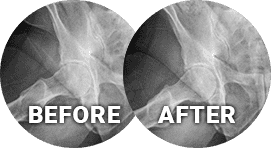One area that has garnered a lot of attention in the always-evolving landscape of advancements is regenerative therapy for knees. Among the encouraging advances is that fundamental microorganism therapy has emerged as a cutting-edge approach that offers new hope to those suffering from persistent knee pain. This extensive online publication will delve into the intricacies of essential stem cell therapy, exploring its actual potential, innovations, and the remarkable impact it may have on the outcome of stem cells knee therapy.
Understanding Stem Cell Therapy:
The remarkable ability of stem cells to transform into various cell types within the body is the fundamental component of stem cell therapy. This trademark has prepared innovative therapeutic applications, particularly in regenerative medicine. When it comes to stem cell treatment for knees – undifferentiated organism therapy involves introducing these pliable cells into the injured joint to promote tissue repair and healing. Unlike traditional medications, underdeveloped stem cell therapy knee pain has the potential to impede the body’s natural healing processes.
For further information about stem cell therapy for knees in Arizona, visit us at Wellness 1st Integrative Medical Center,
Breakthroughs in Stem Cell Research:
Recent advances in underdeveloped cell research have opened up new areas of probability for the discipline. Scientists have made significant progress in understanding the potential and controllability of stem cells for therapeutic applications. Identifying specific types of stem cells, such as mesenchymal stem cells (MSCs), has made it possible to develop targeted and effective therapeutics. Additionally, advancements in the techniques for containing and growing immature cells have smoothed out the proper cycle, increasing its availability and adaptability.
Read also: Understanding Basics: What Are Stem Cells & How Do They Work
Applications of Stem Cell Therapy for Knee Pain:
Stem cells for knee arthritis pain with undeveloped cell therapy involves several steps. Treating undifferentiated cells has promise for treating knee-related ailments, including osteoarthritis and tendon damage. The regenerative capacity of stem cells becomes crucial when traditional therapies, such as medications or physical therapy, offer only partial relief. Stem cell infusions directly into the injured joint aim to promote the healing of damaged ligaments, reduce pain, and improve overall joint function.
Clinical Examples of Overcoming Adversity
Several examples of overcoming adversity have emerged as undeveloped cell treatment advances from research facilities to certified applications. Patients who once confronted the possibility of invasive medical procedures or prolonged suffering have reported significant improvements in their pain levels, mobility, and overall sense of well-being from stem cell therapies. These inspirational tales of triumph over hardship demonstrate the ground-breaking impact of treatment with immature microorganisms on those suffering from knee pain, providing a positive indication for a more potent and non-intrusive therapeutic method.
Challenges and Considerations:
Although undeveloped cell therapy shows promise in treating knee pain, there are some challenges and thoughts to consider. Three essential viewpoints include administrative systems, moral concerns, and the need for more extensive clinical preliminary testing. Further research is also necessary due to the variable nature of silent reactions and the delayed effects of fundamental microorganism treatment. Taking care of these issues will be crucial in establishing underdeveloped cell treatment as a reliable and mainstream treatment option as science advances.
Analogous Research with Conventional Treatments:
It is essential to closely analyze conventional drugs to understand the significance of developing cell therapy in managing knee pain. This section will explore the distinctions between stem cell therapy and traditional medications, emphasizing potential benefits in terms of recovery time, long-term outcomes, and survival advantages. These distinctions can assist individuals experiencing knee pain in making informed decisions about their treatment approach.
Examining Future Developments: Moral and Justifiable Consequences
As with any revolutionary clinical development, the outcome of undifferentiated organism treatment for knee pain involves ethical and legal questions. A thorough evaluation of issues about the ethical procurement of foundational microorganisms, patient consent, and the marketing of undifferentiated cell therapies. To ensure the competent and unbiased advancement of treatments for undifferentiated organisms, it is imperative to align the pursuit of innovative medications with ethical standards and legal restrictions.
To know more about integrative medicine in Arizona, call us at Wellness 1st Integrative Medical Center.
Patient Education and Encouraging:
Investigating the long-term prospects of knee pain treatment involves educating people about undifferentiated cell therapy. This section will offer detailed information on the benefits, risks, and considerations of stem cell treatment. Empowering individuals with knowledge enables active participation in decisions regarding their healthcare, fostering a collaborative and patient-driven approach to treatment.
The Role of Research and Continued Innovation:
Knee pain treatment will ultimately depend on the ongoing commitment to research and development. This section will look into the ups and downs of developing cell research, the advancement of clinical preliminary findings, and potential avenues for further advancements. Readers may appreciate the importance of the developing field of knee pain treatment and the potential role that underdeveloped cell therapy may play in shaping its future by comprehending the novel concept of logical request and the iterative path of clinical headways.
Conclusion
In summary, knee pain treatment is undergoing a revolutionary shift due to the advancements in undifferentiated organism therapy. Stem cell treatment presents a promising alternative for individuals seeking effective and less invasive therapies for knee-related problems, with success stories emerging from both laboratory studies and clinical settings. While challenges and considerations remain, the potential benefits and ongoing research in this field inspire an optimistic outlook. The reconciliation of underdeveloped cell treatment promises to change how we approach and manage knee pain as we examine the evolving field of knee pain treatment. It also offers hope for a future with improved patient satisfaction and further evolved outcomes.



